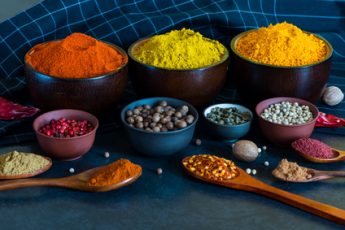If you are like me, you probably don’t know the differences between red and green curry. You just know it tastes good. But now you’ve got a hankering for knowledge as well as delicious food.
So what exactly is a curry? What are the differences between all the types, especially red curry vs green curry? And what does this mean for you?
The word curry is a westernisation of an existing Tamil word, Kari, which originated from people who lived in the south of India and Sri Lanka. It means sauce for rice, which probably explains why so many countries have their varieties of curry. After all, the vast majority of countries around India and China rely on rice as a staple of their diets.
But what does this mean for us when we are talking about green curry vs red curry? Well, one of the biggest parts of understanding a curry is knowing where it came.
Indian curries
Quick Navigation
Because of all of this talk about curry, you might have been thinking about India. It is an entirely common association to make.
Indian curries originate from India in the period where it was colonised and occupied by Great Britain, all the way back in the 17th century. The East India trading company brought back a mix of dried spices that dubbed curry powder, and it became a major craze.
However, in traditional Indian cuisine, most curries tend to be yellow or reddish-orange in colour due to the dried turmeric and other spices used in the preparation. When we are talking green curry, we are only thinking about one place – Thailand.
Thai curries
Indian curry favours dry spices, which eventually evolved into the curry powder that you will find in your local supermarket. But Thai cuisine typically uses fresh ingredients or pastes instead.
It is one of the reasons that Thai curries tend to be a little hotter than the Indian variety. The fresh ingredients deliver more of a kick. And it is these elements that dictate the colour, and the temperature, of the curry you are eating.
A masterclass in Thai curry:
All traditional Thai curries used to make with the same list of ingredients. The only place they differed was the chillies used to flavour it, giving it the right kick and bite, which those curry lovers crave.
What is green curry?
Green curry paste is dense in the herbs, with a list of fresh green chillies, lemongrass, pepper, coriander root, shallots, salt and shrimp paste.
Finally, a touch of basil, Thai green eggplants and lime leaves add both to the flavour and the colour.
Unlike what you’d expect, Thai green curries are hotter than red curries. It is only natural to associate the fiery hue of a red curry with heat, but the green chillies used in green curries tend to have far more of an impact on the dish.
Green curries are also the more ‘traditional’ Thai curry, in that it is closest to the original recipes and differs the most from curries of other countries.
Standard green Thai curries are fish, chicken and beef, though more modern curries might include such exotic ingredients as pizza and spaghetti.
What is red curry?
Red curry paste, despite the colour, tends to be milder than green curry paste, and it is incredibly versatile and easy to use.
Red curry, made from dried chilli peppers, might also include coriander, cumin, cilantro, garlic, lemongrass, peppercorns, sea salt and shallots.
Because of the sheer versatility of this dish, you will find that red curries have almost anything added to them, but traditional recipes include chicken, duck, pork, beef and a wide variety of seafood including shrimp.
What is yellow curry?
Thai yellow curries are comparatively rarer than green and red, mostly because it is very similar in style and flavour to an Indian curry.
That is because the main ingredient in a yellow curry is turmeric, the same ingredient that gives Indian curries their distinctive colour and flavour.
Which Is Better? Neither.
No matter what colour your curry is, as long as prepared properly with love and forethought by the chef, you are in for a treat. Thai cuisine is exceptional, whether it is traditional or the blend of Thai and western food that is come to be known as Thai fusion.
The main thing to remember when you are cooking and you are facing the choice of a red curry vs green curry? The green is hotter compared to the red that is milder. Bear in mind that one thing and you really can’t go wrong!

